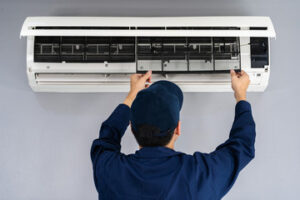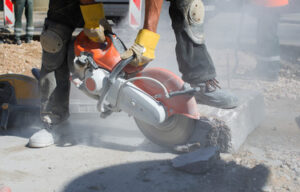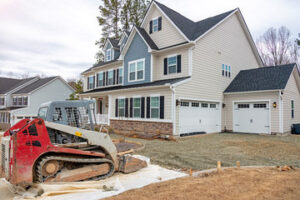AIR CONDITIONING INSTALLATION MILFORD OH is essential for ensuring a comfortable and energy-efficient indoor environment. Installing an air conditioning system involves more than just placing the unit in a room; it requires careful planning, proper handling of equipment, and an understanding of the space’s cooling needs.

The process of installing an air conditioning system affects the system’s long-term performance, energy efficiency, and lifespan. Proper installation ensures that the unit operates at its optimal capacity, providing consistent cooling while minimizing energy consumption. An improperly installed air conditioning unit can lead to poor airflow, uneven cooling, increased energy bills, and potential system malfunctions. Therefore, understanding the steps involved in air conditioning installation is crucial to achieving reliable and efficient operation.
The first step in air conditioning installation is assessing the cooling requirements of the space. This involves evaluating factors such as room size, insulation levels, sun exposure, and the number of windows and doors. A system that is too small for the space will struggle to maintain the desired temperature, leading to constant cycling and increased wear and tear. On the other hand, a system that is too large will cool the room too quickly, resulting in short cycles that prevent proper humidity control and increase energy consumption. Conducting a load calculation, which considers all these factors, helps determine the appropriate size and capacity of the air conditioning unit. Accurate sizing ensures that the system operates efficiently and maintains consistent indoor comfort.
Once the appropriate unit size and type have been determined, the next step involves selecting the location for installation. Proper placement of both the indoor and outdoor components is critical to the system’s performance and efficiency. The indoor unit should be installed in a location that allows for even air distribution throughout the room while avoiding direct sunlight and heat sources. Placing the unit too close to furniture or walls can obstruct airflow and reduce cooling efficiency. The outdoor unit, which houses the compressor and condenser, should be placed in a well-ventilated area with sufficient clearance for proper airflow. Installing the outdoor unit on a stable surface minimizes vibrations and noise while preventing debris buildup and water accumulation.
The installation process also includes connecting the refrigerant lines, electrical wiring, and drainage system. The refrigerant lines must be properly insulated and secured to prevent leaks and maintain efficient heat transfer. Any leaks in the refrigerant lines can lead to reduced cooling performance and increased energy consumption. Electrical wiring must be installed according to safety standards, ensuring that the system receives a stable power supply and proper grounding. A reliable drainage system is essential for removing condensation produced during the cooling process. Improper drainage can lead to water leaks, mold growth, and structural damage. Ensuring that the drainage system is correctly sloped and connected to an appropriate outlet prevents these issues and maintains the system’s efficiency.
Testing and calibration are crucial steps in the air conditioning installation process. After the unit is installed and connected, the system should be tested to confirm that it is operating correctly and efficiently. This involves checking the airflow, refrigerant levels, and thermostat settings. Proper calibration ensures that the system maintains the desired temperature and responds accurately to changes in the environment. Technicians typically use specialized tools to measure the system’s pressure, temperature, and electrical output. Adjustments may be necessary to balance the airflow and optimize the cooling performance. Verifying that the system meets manufacturer specifications and operates within the recommended range ensures long-term reliability and energy efficiency.
Proper insulation and sealing of the installation area also play a key role in the performance of the air conditioning system. Gaps and leaks around the installation site can allow warm air to enter and cool air to escape, reducing the system’s efficiency and increasing energy consumption. Sealing ductwork, windows, and doors prevents air leaks and ensures that the conditioned air remains within the intended space. Insulating refrigerant lines and ductwork further enhances the system’s efficiency by reducing heat loss and maintaining consistent airflow. Attention to detail during the installation process helps prevent future performance issues and ensures that the system operates at peak efficiency.
Maintenance and follow-up care are essential after the air conditioning installation is complete. Regular maintenance helps extend the lifespan of the unit and ensures consistent performance. This includes cleaning or replacing air filters, checking refrigerant levels, inspecting electrical connections, and cleaning the condenser coils. Dirty filters and coils reduce airflow and cooling efficiency, leading to increased energy consumption and potential system failure. Scheduling professional inspections and maintenance at least once a year helps identify and address minor issues before they become major problems. Keeping the system clean and well-maintained enhances indoor air quality and ensures that the system operates at its best.
Energy efficiency is a significant consideration in air conditioning installation. Proper installation and maintenance contribute to lower energy consumption and reduced operating costs. Installing a programmable thermostat allows for better control over the cooling schedule, reducing energy use when the space is unoccupied. Zoning systems, which allow different areas of a building to be cooled independently, further enhance energy efficiency by directing cooling only where it is needed. Choosing an energy-efficient unit with a high seasonal energy efficiency ratio (SEER) rating improves overall performance and reduces environmental impact. Energy-efficient systems not only lower utility bills but also contribute to sustainable building practices and reduced carbon emissions.
Noise reduction is another benefit of professional air conditioning installation. Poorly installed units can produce excessive noise due to vibrations, loose components, or improper mounting. Ensuring that the unit is securely fastened and that the refrigerant lines and electrical connections are properly secured reduces operational noise. Installing sound-dampening materials around the unit and within the ductwork further minimizes noise levels, creating a quieter and more comfortable indoor environment. Advanced features such as variable-speed compressors and insulated cabinets also help reduce noise and improve overall comfort.
The choice of air conditioning system type influences the installation process and the system’s performance. Central air conditioning systems require ductwork to distribute cooled air throughout the building, while ductless systems use individual air handlers for each room. Split systems, which separate the indoor and outdoor components, offer flexibility in installation and zoning options. Packaged systems, which house all components in a single unit, are typically easier to install and require less indoor space. Understanding the advantages and limitations of each system type helps determine the best option for a particular building or space. Proper installation techniques tailored to the specific system type ensure optimal performance and long-term reliability.
Environmental considerations are becoming increasingly important in air conditioning installation. Advances in refrigerant technology have led to the development of more environmentally friendly options that reduce greenhouse gas emissions and ozone depletion. Proper handling and disposal of refrigerants during installation and maintenance prevent environmental contamination and ensure compliance with regulations. Installing energy-efficient systems and using sustainable materials further reduce the environmental impact of air conditioning systems. Building codes and standards increasingly emphasize energy efficiency and environmental responsibility, encouraging the adoption of advanced technologies and sustainable practices.
The long-term benefits of professional air conditioning installation extend beyond immediate comfort and efficiency. A well-installed system provides consistent and reliable cooling, enhances indoor air quality, and reduces humidity levels. Maintaining proper humidity levels helps prevent mold growth and improves overall comfort. Clean, filtered air reduces allergens and pollutants, creating a healthier indoor environment. The improved comfort and air quality resulting from a professionally installed air conditioning system contribute to overall well-being and productivity. Investing in quality installation and regular maintenance ensures that the system operates efficiently and reliably for years to come.
In conclusion, air conditioning installation is a complex process that requires careful planning, precise execution, and ongoing maintenance. Proper sizing, placement, and connection of the system components are essential for achieving optimal performance and energy efficiency. Attention to detail during installation, combined with regular maintenance, ensures that the system operates reliably and maintains consistent indoor comfort. The benefits of professional installation extend to energy savings, improved air quality, reduced noise levels, and enhanced overall comfort. Investing in a high-quality air conditioning system and ensuring that it is installed correctly provides long-term value and a comfortable indoor environment.


